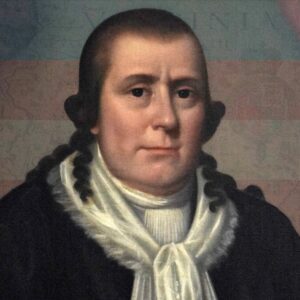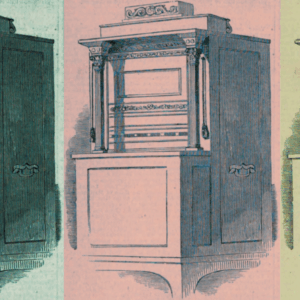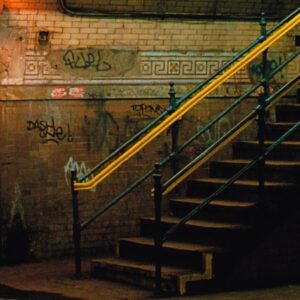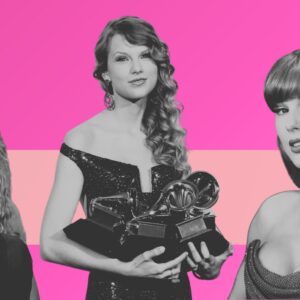
How Racism and Neglect Fueled the Rise of Gang Life in Denver
Julian Rubinstein Tells the Story of a Neighborhood
It would be hard to imagine a better vantage point from which to witness life in Northeast Park Hill than the picture window of the first-floor apartment little Terry Roberts shared with his mom. Directly across the street was the Dahlia Shopping Center.
After two long years, the debris from the former bowling alley had finally been cleared. In its place opened Fast Eddie’s, a roller rink, as well as some shops and an after-hours “dice shack.” The center’s vast parking lot became a gathering place again, featuring folding chairs, chess tables, and an occasional sofa. Terrance, who wore a tall afro and rode a plastic tricycle, paid close attention to the men playing chess and talking politics. “Don’t ever forget you’re from Park Hill,” they told him.
“Park Hill Pride” was a mantra many in Denver had heard. A 1974 study commissioned by the Colorado Civil Rights Commission, “The Park Hill Experience,” described the neighborhood as “one of the few, perhaps the only, ethnically and economically diverse ‘stable’ communities in the United States.” The false narrative of the community’s successful integration continued. South Park Hill remained a wealthy, mostly white neighborhood. Northeast Park Hill was neither diverse nor economically stable, but despite this, its pride was something to behold. In the 1960s, the neighborhood was home to Pam Grier, who in 1974 became the iconic justice avenger Foxy Brown, star of the eponymous blaxploitation film. Many, including Ernestine, kept their lawns meticulously groomed, and bushes and trees shaped.
Eventually Terrance was exploring the neighborhood by tricycle. He rode down 33rd Avenue, where he passed, in alphabetical order, Elm and Forest and Grape, until he arrived at the neighborhood’s other capital, between Hudson and Holly, the Holly Shopping Center. Along with the low-slung shopping strip on the south side of 33rd, and the Skyland Rec Center across Holly Street to the east, the area was simply known as “the Holly.”
In his travels, Terrance encountered Vietnam vets and former Black Panthers. Many wore traditional Ghanaian kente cloth or T-shirts in red, green, and black, the colors of the African liberation movement. Some spoke of the government’s plan to keep Black people in poverty, and how America’s first police force was created to catch runaway slaves. “Got that young blood,” one said to Terrance, using a term of endearment that, along with cuz, would eventually signal violent division in the community.
The mostly progressive city remained a particularly segregated one; many employers remained unwilling to hire African Americans.
Terrance was precocious and he intuited early that there was a code in his community one shouldn’t violate: an intolerance of disrespect. Perhaps it was generated by years of oppression, perhaps by more recent slights, like PEDCO leaving the Dahlia Lanes a burned-out shambles.
One day in the summer of 1979, age three or four, Terrance was walking in the common area of the Red Bricks apartments when he was goaded into a circle of boys from the complex. An older kid pushed him around and asked if he was a “punk.” Terrance tried to throw a punch but was too small.
The bigger kid appeared angered by Terrance’s gall and picked up a stick from the ground, threatening to whack him. Terrance ran. But as soon as he got to his apartment, he knew he had to go back. He was no punk. He found a loose brick and marched toward the group with his little arm cocked and ready. For the others, the sight was enough. From that point, Terrance was accepted as part of the group.
A couple dozen kids his age lived in and around the Red Bricks. Most of them had single, working mothers, including the three Alexander brothers. Isaac, the oldest, was one of the neighborhood’s toughest and cockiest kids.
When the snow fell heavily, they gathered at Chauncey Billups’s house on 29th and Poplar, around the corner from Ernestine’s place. The city’s plows would pile the snow high on Chauncey’s corner, and the kids would climb the snow mound and see who could stay on top longest by pushing others off. It was called “King of the Hill,” as in Park Hill. Chauncey, a future NBA superstar, had the name of the game tattooed on his arm.
In the summers, music blared from boomboxes as the Holly and Dahlia parking lots were transformed into break-dancing venues. Terry, as some called Terrance, refused to let his diminutive size and age prevent him from being part of the neighborhood troupe. To gain acceptance, he rounded up cardboard boxes to create dance floors.
Terrance’s favorite tune was “Rapper’s Delight” by the Sugarhill Gang. Terrance had an impressive windmill, spinning on his shoulders with his feet splayed in the air, and a pushup-style move in which he held himself aloft with one hand while twirling in circles. The troupe spent entire days practicing for dance-offs against other neighborhoods. Their biggest rival was Five Points, against which they faced off at City Park, as relatives and neighbors cheered.
*
Ernestine was still cooking for the same family, but in 1980 she decided to take her chance at a lifelong dream. A restaurant on a small commercial block near her home was closing. She negotiated to take over the lease and, working nights and weekends, she opened a soul food restaurant, A&A Fish.
The two jobs kept her going from dawn to dusk, but she had help from her huge extended family, who cooked, waited, and hosted. Early each morning, Ernestine went to the Asian fish markets on the west side of town. When her vegetable truck made its deliveries, she called Rev. Phillips and the other clergy to tell them to come get what they needed.
A&A became a neighborhood institution. Denver Broncos players and other prominent community members—including the future first Black mayor of Denver, Wellington Webb—were regulars. At six feet five, Webb was easy to spot. When Ernestine saw him come in, she didn’t have to wait for his order. She began making the fried catfish and black-eyed pea plate.
Terrance would often stay all day at the restaurant, talking to customers and playing the Centipede video game. When he got bored he’d go across the street to hang out in the barbershop. The local economy benefitted from being almost its own system; money changed hands within the neighborhood multiple times.
And yet the neighborhood’s poverty rate, already well above that of the city, was rising. Denver’s environmentalism had made it the first city to turn down an Olympic Games, in 1976. But the mostly progressive city remained a particularly segregated one; many employers remained unwilling to hire African Americans. One that did was Stapleton Airport, just across Quebec Street. Suzanne worked for Hertz. George’s mother took a job on the janitorial staff. Terrance’s grandmother on his father’s side worked as a baggage handler. The other big employer was Safeway. The regional supermarket chain’s distribution center was located in the northern industrial edge of the neighborhood. Chauncey Billups’s dad and Terrance’s mother’s boyfriend, and many others, worked there.
Despite the lack of resources, the occasional Rolls-Royce or custom Cadillac found its way onto the streets. For the kids, the excitement of spotting such a car became a game they called That’s My Car! One day Terrance spotted a tricked-out Mercedes-Benz coming toward them. “That’s my . . . ,” he began to call out until he realized who was waving from the passenger seat. “That’s my . . . dad! That’s my dad!” Terrance yelled, running over.
George saw Terrance a few times a year, always unannounced. He was living between Denver and Oakland, where he also had family, and his gregarious nature led him through many circles, including that of the former Black Panthers. He had photos of himself with Huey Newton, who he was often mistaken for in Oakland, due to their similar light complexions and soft features.
George made no pretense about being an activist. He was a street hustler and good at it, living off of robberies and scams. At the time, this was something that former Black Panthers like Lauren Watson had come to appreciate.
George had no bank account or savings, sometimes nothing in his pockets but a pair of weighted dice. Lithe and handsome, he dressed in silk shirts, alligator boots, and gold chains. He was a ladies’ man and an entrepreneur who started a side business doing pedicures for the beautiful women he befriended on the street, Black and white alike.
Gangsters had many friends in the neighborhood. They spread the wealth and kept up the cheer. Terrance loved it when his dad came around, and slipped some money in his pocket and asked if all was cool in the hood. Terrance thought he had the best dad in the world.
Suzanne did not share her son’s opinion. When George did show up, he and Suzanne inevitably wound up in a shouting match. Once she took a bike chain and beat on George’s car. “Don’t ever be like him,” Terrance’s mom told him.
*
Though George was mostly absent, Terrance’s family—like many in Denver’s African American community—was large. Because of Ernestine and her nine siblings, it was particularly so.
Nothing was able to thwart the appeal of the Crips, who offered family, protection, and even infamy to thousands of youth in South LA who sought it.
One of Terrance’s favorite things to do was go to Five Points to visit his aunt Marsha and her four kids, who lived in a two-bedroom apartment in the Arapahoe Projects. It was one of the few public housing blocks the city had erected in the 1950s. Terrance loved to curl himself into a ball and sit on his cousins’ feet so that they could cannonball him into the air. Whenever Terrance and his mom got back home from a visit, she made him shake his clothes out because roach egg sacks would hang from his pants and shirt. They had roaches, too, Terrance and his mom joked, but at least theirs ran when the lights went on.
While the fires burning in the Bronx became the national symbol of late ’70s urban decay, Five Points became Denver’s. The historic “Harlem of the West” was no longer welcoming or safe to outsiders. With few jobs and high poverty rates, robberies, such as the basic stickups that George and his friends committed, were common. Most of the original Welton Street shops and restaurants closed due to lack of business. Elvin Caldwell, the Black city councilman who Lauren Watson had pilloried, purchased the Rossonian Hotel in the hopes of refurbishing it, but it failed to attract investors. Instead it burnished a new reputation as the boarded-up backdrop for sex workers, drug dealers, informants, and police stings.
On one of Terrance’s visits to his cousins’ apartment, they were heading to the nearby candy store when Terrance saw a body facedown in a grassy area between buildings. The man’s head was turned to one side, his eyes and mouth open. The area was cordoned off with police tape, but Terrance saw that no one seemed to care. A group of kids played hopscotch nearby. His eleven-year-old cousin grabbed his hand and they kept on to the store.
Though gun violence was not yet common, arguments and fights in northeast Denver were regular. As he lay in bed each night, Terrance heard shouts and screams from the north end of the Dahlia, near the after-hours club. The place was operated by the Sons of Darkness, a motorcycle club whose founders included Nathan Jones. Nathan had never fully recovered from being shot. He told his brother Alvin he felt like he’d died that day. He wore black leather jackets and had scars on his neck from Officer Moravek’s bullet. He openly despised the police and believed they targeted him for being a “cop shooter.” Nathan’s long arrest record included drug possession, forgery, and littering. He was angry and often drank to excess. In 1993, while on bond for a cocaine case, he killed his girlfriend with a punch. Nine years later, he died in prison, after falling ill and begging for medical help. A staff nurse told Denver’s alternative weekly newspaper Westword that Nathan would have lived if he’d received care. He was fifty-two.
Anger was a problem in northeast Denver. Lauren Watson, who had been arrested thirty-three times without a conviction, frequently quoted James Baldwin, who said that “to be a Negro in this country and to be relatively conscious is to be in a rage almost all of the time.” He and his wife named their first child Hasira, Swahili for “righteous rage.”
Watson partially blamed the failure of the city’s civil rights movement on other Blacks—informants working for the government and “sambos,” or traitors, like Elvin Caldwell, whom he felt had sold out their roots for their personal gain. One day in 1980, Watson drove to the Holly to play volleyball at the Skyland Rec Center and encountered a man he considered to be part of the problem. He went back out to his car, got a gun from the trunk, and returned to the weight room, where he shot the man, hitting him in the arm. Watson’s resulting criminal case would be the only one he ever lost; he took a plea that enabled him to serve less than a year in prison.
*
The dismantling of America’s most influential civil rights groups and leaders accompanied a new phenomenon that was of immediate interest to police departments across the country: an explosion in the number of street gangs.
Gangs of all races had existed for decades. As the Black population of Los Angeles soared in the post–World War II years, racist white gangs such as the Spook Hunters threatened to hurt Blacks who crossed certain streets in the city. In reaction, Black gangs like the Slausons—named for Slauson Avenue, which traverses Central LA—formed in self-defense. Soon, some of the city’s Black neighborhood groups—car clubs, dance groups, and street fighters—developed their own rivalries. But, with the onset of the Watts Riots, those conflicts eased as many LA gang members recognized they were on the same side of a bigger fight. Some formed civil rights groups. Bunchy Carter, a member of the Slausons, became a leader of the LA Black Panthers. Other former gang members drafted a plan to rebuild Los Angeles.
Bunchy’s assassination on the UCLA campus four years later devastated the youth of his community, who looked up to him. Among them was Raymond Washington, a fifteen-year-old high school sophomore, who had been one of the youngest members of a group allied with the Black Panthers, the Avenues. After Bunchy’s death, Washington felt the city change. Unemployment in South Los Angeles was rising, and the streets were increasingly dangerous. Washington asked his friends, Who is left to protect and defend the neighborhood? They agreed a new organization was needed.
Washington founded the Avenue Cribs. For short, they were the Cribs or the Baby Avenues, a claim to be the new generation. But Washington didn’t want his group to represent only their own neighborhood. He wanted it to become a movement, like the Panthers. The Cribs distinguished themselves by wearing leather jackets and earrings and carrying embossed canes as a fashion accessory. Eventually they began calling themselves Crips.
On March 20, 1972, a group of new Crips committed a murder that captivated the city and set the gang on an unexpected course. On that night, the Black soul musician Curtis Mayfield, known for the civil rights anthem “People Get Ready,” was playing at the Palladium theater in Hollywood. After the show, about twenty Crips were watching the crowd leave when they spotted an African American teen in a nice leather jacket. Several Crips jumped him and attempted to steal the jacket. Seeing this, sixteen-year-old Robert Ballou, Jr., a high school football star, came to his aid. The Crips turned on Ballou, stomping him to death as a crowd watched.
Ballou’s murder made front-page news and gave the teenaged members of the Crips something they craved: notoriety and respect. Some made death threats to witnesses.
The specter of tragedy loomed. At Ballou’s funeral, the priest officiating the ceremony had a heart attack and died at the pulpit. LA mayor Sam Yorty decided to take $250,000 out of his Model Cities funding to create a Parent Power program, in hopes of providing more responsible role models.
But nothing was able to thwart the appeal of the Crips, who offered family, protection, and even infamy to thousands of youth in South LA who sought it. The gang’s recruitment soared.
For many elders, watching Black neighborhoods go to war with one another was devastating.
But not every neighborhood group wanted to become Crips. Some youths had begun to form gangs in the name of their own neighborhood. And in a world in which pride and ego were sometimes all that they had, the Crips took offense. “We morphed into the monster we were addressing,” Stanley “Tookie” Williams, who joined Washington in 1971 as a leader of the Crips, later said.
The Crips killed several gang members from other neighborhoods and the rising threat the gang posed prompted the leaders of a gang from Compton called the Piru Street Boys to call what would become a historic meeting of non-Crip gangs. Those who attended agreed to form an alliance to protect one another; in solidarity they decided to refer to one another as “blood,” short for “blood brother.” It was a term widely used within the Black Power movement, and by Black soldiers in Vietnam.
As with the Crips, being a Blood was an affiliation. Each individual group or “set” maintained its neighborhood identity. Despite law enforcement claims, they did not have centralized leadership. To identify themselves, Bloods wore the color red, symbolizing their blood bond. Bloods also respectfully called themselves damu, Swahili for “blood.”
For many elders, watching Black neighborhoods go to war with one another was devastating. Some saw it as a grotesque outgrowth of generations of trauma, this time fueled by tribalism, PTSD, and self-hatred. Some believed it was because of the leadership vacuum that had been created by the loss of the previous generation of activists. Others felt that without role models or historical context for decades of struggle, the youth were left with only the same implicit societal bias that America generated, that Black lives didn’t matter.
By the late 1970s, Denver police were tracking a few dozen street gangs, most of which had recently appeared.
But for the young men in the streets—streets that felt increasingly like battle trenches and which delineated new borders—the reason for the violence was simple: attacks demanded retaliation. They weren’t punks.
Raymond Washington, the Crips’ founder, was an old-fashioned street fighter and disliked guns. But he’d quickly been caught and convicted of a robbery, and spent several years in prison in the early to mid-1970s, as Los Angeles’s gang homicide tally rose into the hundreds per year; nearly all of the killings were gun-related. The old-fashioned street fight had become a relic of a bygone era.
When Washington got out of prison, Crips hid their firearms when he was around, but that would not be for much longer. In 1979, Washington was shot on the street and died in surgery, age twenty-five. Like many gang-related homicides, his murder remains unsolved.
Tookie Williams was taken off the streets for good as well. While maintaining his innocence, he was convicted in 1979 of killing four people in two separate robberies, and sentenced to death.
Yet despite the losses of the gang’s leaders, the Crips had too much momentum. “Crips don’t die, they multiply,” became the gang’s motto. Indeed they would grow faster than anyone could have predicted.
*
By the late 1970s, Denver police were tracking a few dozen street gangs, most of which had recently appeared. Some were Latino, some Asian, but the majority were African American and located in northeast Denver. Among them, two clear rivals had emerged: the Brick Cities, from Five Points, and the BOYZ, from Northeast Park Hill.
The BOYZ had formed in part to replace the aging Sons of Darkness, many of whose members had been locked up or were incapable of providing the kind of physical defense needed. While the Sons of Darkness were still headquartered in the Dahlia, the BOYZ claimed the Holly Shopping Center, which was Black-owned for the first time. In 1983, Johnny Copeland, the well-dressed owner of one of northeast Denver’s most popular after-hours club and a legend of the invisible city, bought the Holly Shopping Center for $800,000.
Terrance started to see the BOYZ. They wore Members Only jackets, and B on their hats for BOYZ, or P for Park Hill. Ranging in age from fourteen to twenty-four, some spoke to Terrance, and occasionally slipped him a dollar. With hundreds of members, the BOYZ were believed by Denver police to be the biggest of Denver’s gangs, though members explicitly called the group an organization.
Every few weeks the BOYZ had a showdown with another Denver gang. Sometimes it was a dance-off. Increasingly, when it involved the Brick Cities, it featured a brawl.
By the early ’80s, animosity between the gangs from Denver’s most storied African American communities grew to the point that Terrance could no longer visit his aunt Marsha and his cousins; the Brick Cities were named for the Arapahoe and Curtis Park brick housing projects where they lived. Terrance, a resident of the rival neighborhood, was no longer welcome. From that point forward, Terrance’s idea of family began to change.
*
By then, Terrance and his mother had moved into a rental house on 29th and Olive, around the corner from his grandmother. Terrance’s new best friend was Bryan Butler, part of a well-known Northeast Park Hill family. One day Terrance and Bryan were throwing a Nerf football when some older kids came and stole it. Terrance gathered Bryan and some of their other friends over to the shed in his grandmother’s backyard. Terrance suggested that for protection they form their own gang, the Park Hill Ninja Club.
Terrance, age nine, was the bossy leader, hatching plans and ordering missions such as ripping tiles from roofs and fashioning them into dangerous Chinese stars, or stealing bikes. Emulating the BOYZ, if the Park Hill Ninja Club members saw kids who weren’t from their hood, they tried to fight them.
Like much of the youth in Northeast Park Hill, Terrance and Bryan wanted to be accepted by the BOYZ. They hoped one day to be the defenders of the hood. There was no higher honor.
“What is a gang? A group of boys hanging together? All I know is my child is dead.”
One day, word came that the Brick Cities were coming for a showdown at the Dahlia. Terrance and Bryan scoured the neighborhood, collecting sticks and bike chains, and brought them to the parking lot. “Right on,” some of the BOYZ called out.
Around dusk, a group of cars appeared on 33rd Avenue from the west. Members of the Brick Cities stepped out, four and five to a car, some carrying bats. Terrance watched in awe as northeast Denver’s toughest teenagers faced off in the parking lot, about twenty a side. The BOYZ’s best puncher started the battle by knocking down a member of the Brick Cities with one swing. The melee that ensued involved bats, sticks, bike chains, knives, and Chinese stars. No one called the police and none came. Finally, with few left standing, the fight ended, a draw.
There were no deaths that day, but months later, in the spring of 1983, four gang-related homicides marked Denver’s passage to a new era. One of the murders that featured prominently in the local news was that of seventeen-year-old William Berrien, a Five Points resident and member of the Brick Cities. William had gotten in a dispute at a party with members of a rival gang. He was clubbed in the head with a baseball bat and stabbed in the back. He bled out on the floor. His fourteen-year-old brother, Eric, witnessed his death.
At the funeral, reporters crowded his mother, asking what she knew about her son’s gang. “You all keep saying, Gang, gang, gang,” she said, according to The Denver Post. “What is a gang? A group of boys hanging together? All I know is my child is dead.”
William’s brother Eric appeared dazed. “First, we was just dancing,” he told the Post. “It was a dancing group.”
*
As Denver began to peer into a violent abyss, the city’s gang progenitor, Los Angeles, had entered an unprecedented era. The dramatic rise in LA’s shootings accompanied a flood of cocaine into the city. The kingpin was a slender twenty-something who lived in a Crip neighborhood by the freeway. But “Freeway” Rick Ross wasn’t a gang member. He had an aversion to violence after, as a five-year-old, he witnessed his mother shoot and kill her brother as he stabbed his wife.
Ross wanted to be a businessman but couldn’t get hired. He was illiterate and unable to even fill out a job application. Around 1980, he found a cocaine connection and began to sell small bags of what he’d previously thought of as a “Hollywood drug.” A couple of years later, someone showed him something called “ready rock.” It was smokeable cocaine. People would pay fifty dollars for a pebble of it, which could be put into a pipe. Later called crack, it was made by adding water and baking soda to powder cocaine and boiling it in a jar until it formed a waxy substance that could be cut up. Smoking it produced a brief euphoric high. Ross could see that many of its users immediately wanted more. He saw a huge market for the new drug and was determined to find the biggest cocaine supplier he could. Soon he was introduced to a Nicaraguan, Danilo Blandón, who was flying in cocaine by the ton.
Blandón became like a second father to Ross, selling him as much as 500 kilos (or 1,100 pounds) per week. He also provided guns, ammunition, and even bulletproof vests. Ross decided to work mostly with Blood and Crip leaders, who offered him protection in exchange for the opportunity to sell his product in their neighborhoods.
By 1983, Ross was becoming the biggest drug dealer in South LA, selling around one million dollars’ worth of rock every day. He became a hero in his neighborhood, where he put up the money to build basketball courts and sponsored a community Easter egg hunt.
In 1986, the planes carrying Freeway’s product were still flying when ten-year-old Terrance Roberts was leaving the YMCA one afternoon. He was startled by what turned out to be his first glimpse of the man who would become Denver’s greatest underworld legend. Several kids ran toward Terrance, calling out something he couldn’t hear. Another group followed behind. “Michael Asberry is coming!” he heard them shout. “Michael Asberry is coming!”
__________________________________
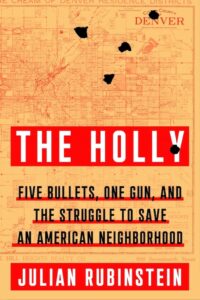
Excerpted from The Holly: Five Bullets, One Gun, and the Struggle to Save an American Neighborhood by Julian Rubinstein. Published by Farrar, Straus & Giroux. Copyright © 2021 by Julian Rubinstein. All rights reserved.
Julian Rubinstein
Julian Rubinstein is a journalist and the author of Ballad of the Whiskey Robber, which was a finalist for the Edgar Allan Poe Best Fact Crime award. His work has appeared in The New Yorker, Rolling Stone, and The New York Times Magazine, as well as in Best American Crime Writing. He is a visiting professor of the practice of documentary journalism at the University of Denver.









